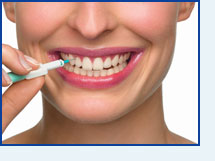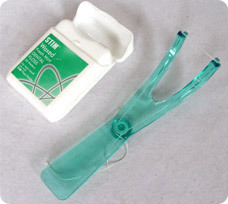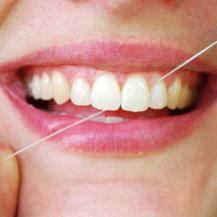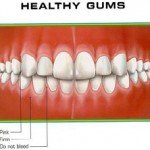The following program, when followed nightly, can aid in the prevention of plaque, tooth decay and gum disease.
Dry brushing. The first step is brushing every tooth with a dry toothbrush at the gum crevice, both on the inside and on the outside of teeth. Hold the brush at a 45-degree angle to the teeth and slide the bristles closest to the inside of the upper lip under the gum. Vibrate the brush, making sure the tips of the bristles rotate under the gums (rather like scrubbing the cuticle of a fingernail). Use about ten quick rotations of the brush per tooth, trying not to lift the brush at any point (it’s been found that a person invariably lifts the brush on the same teeth time after time, and those teeth never get the right amount of cleaning). On the inside of the front teeth, hold the brush like a lollipop, parallel to the teeth, and brush with the tip, making sure the bristles slip under the gum. If you want to make sure the bristles get under the gum, bite the brush gently and you’ll force the bristles up. Continue reading →




